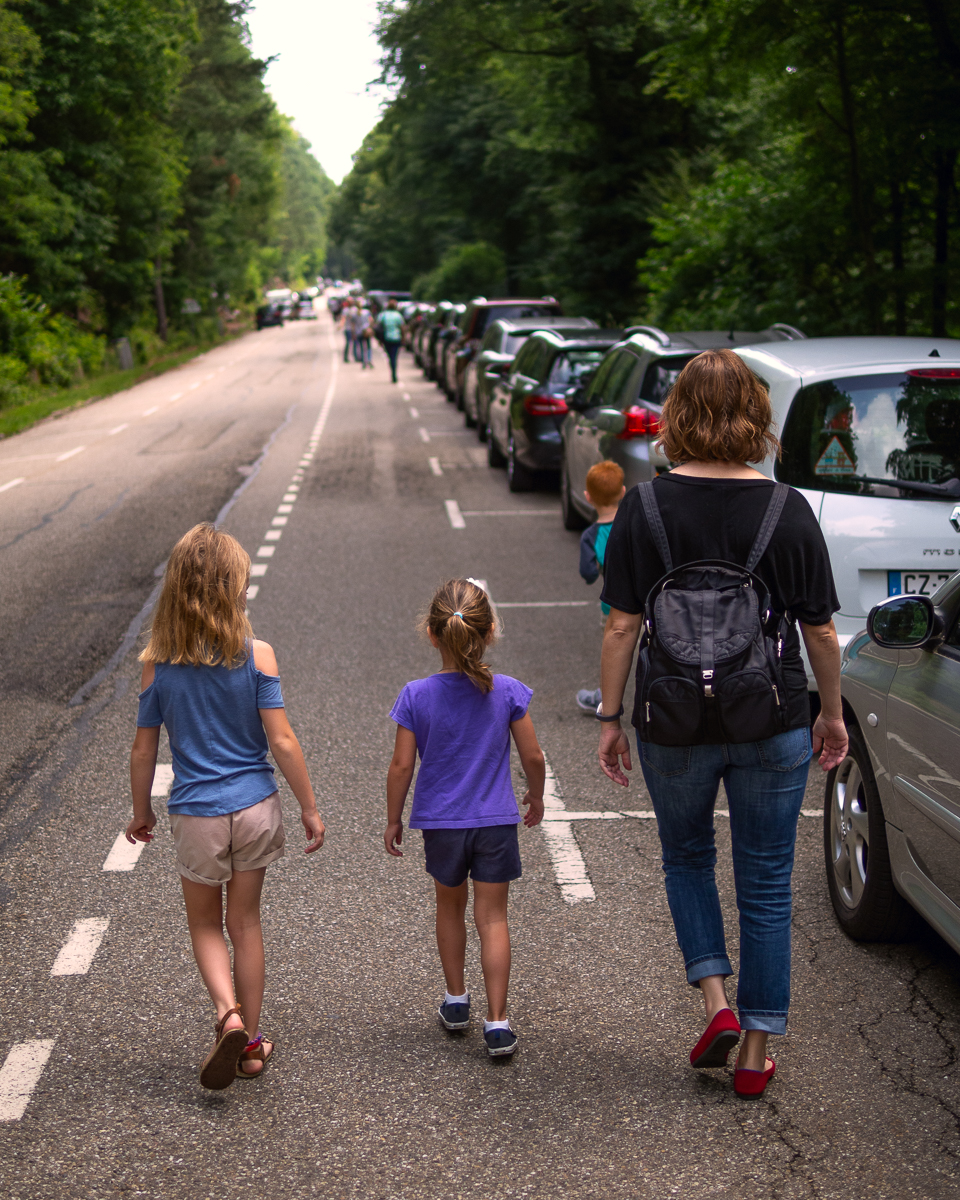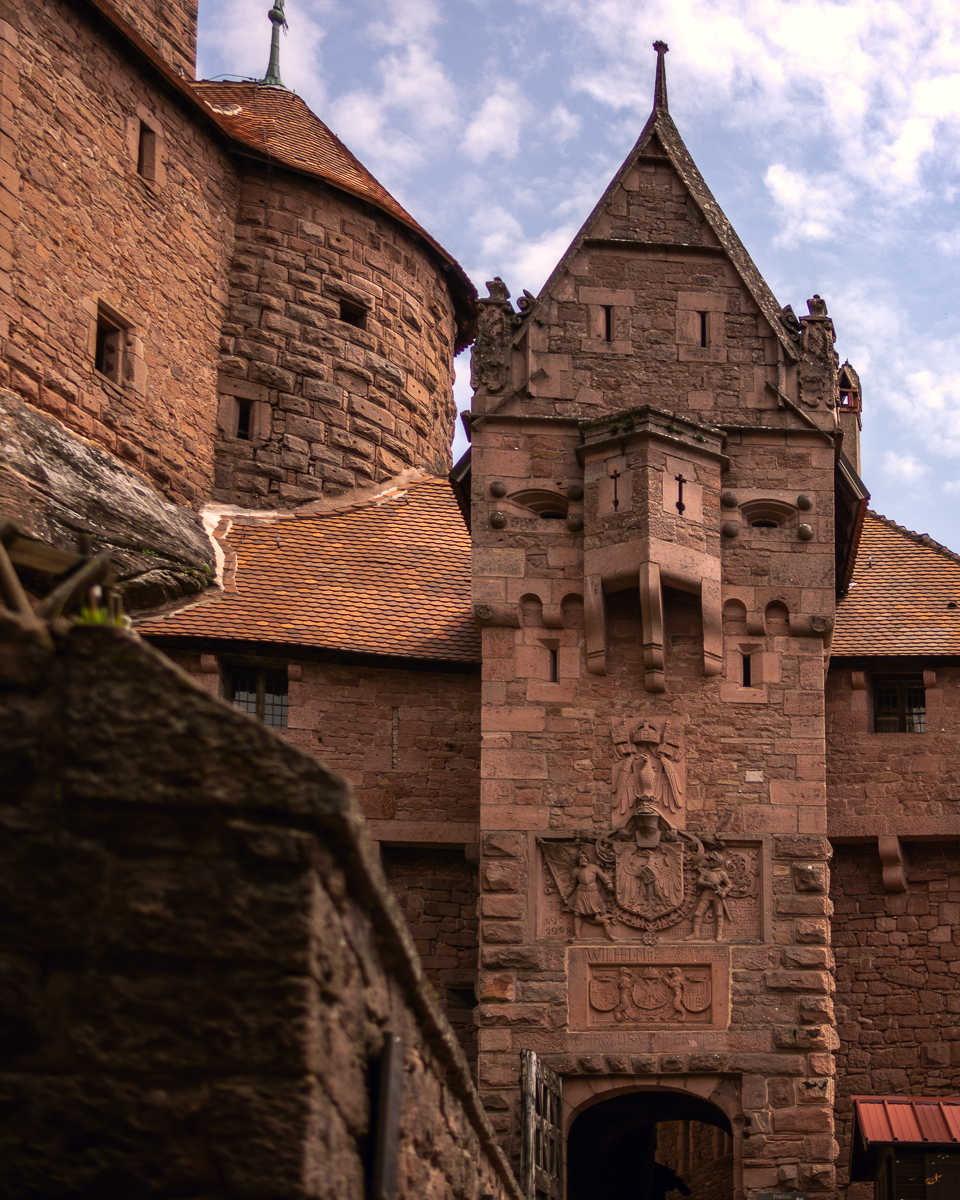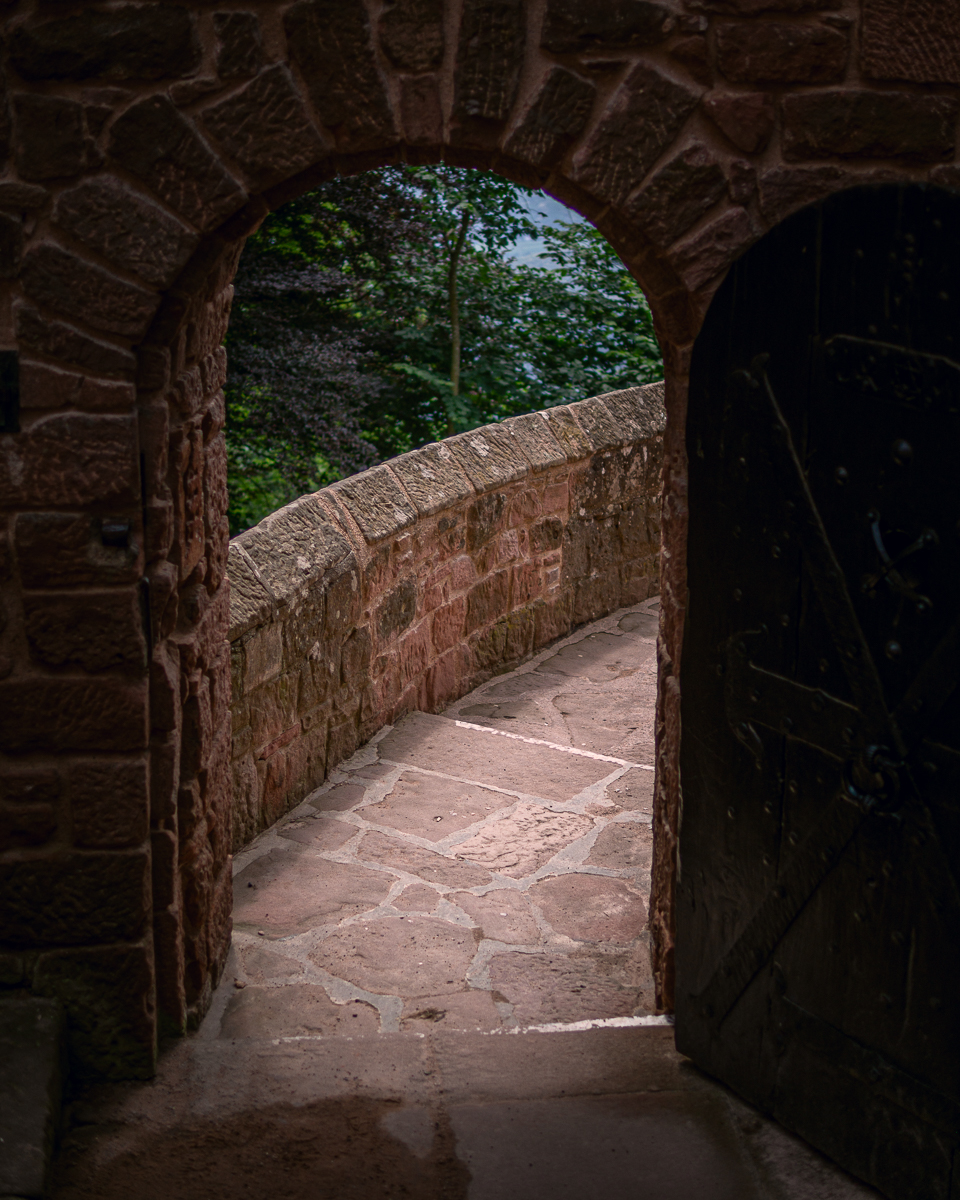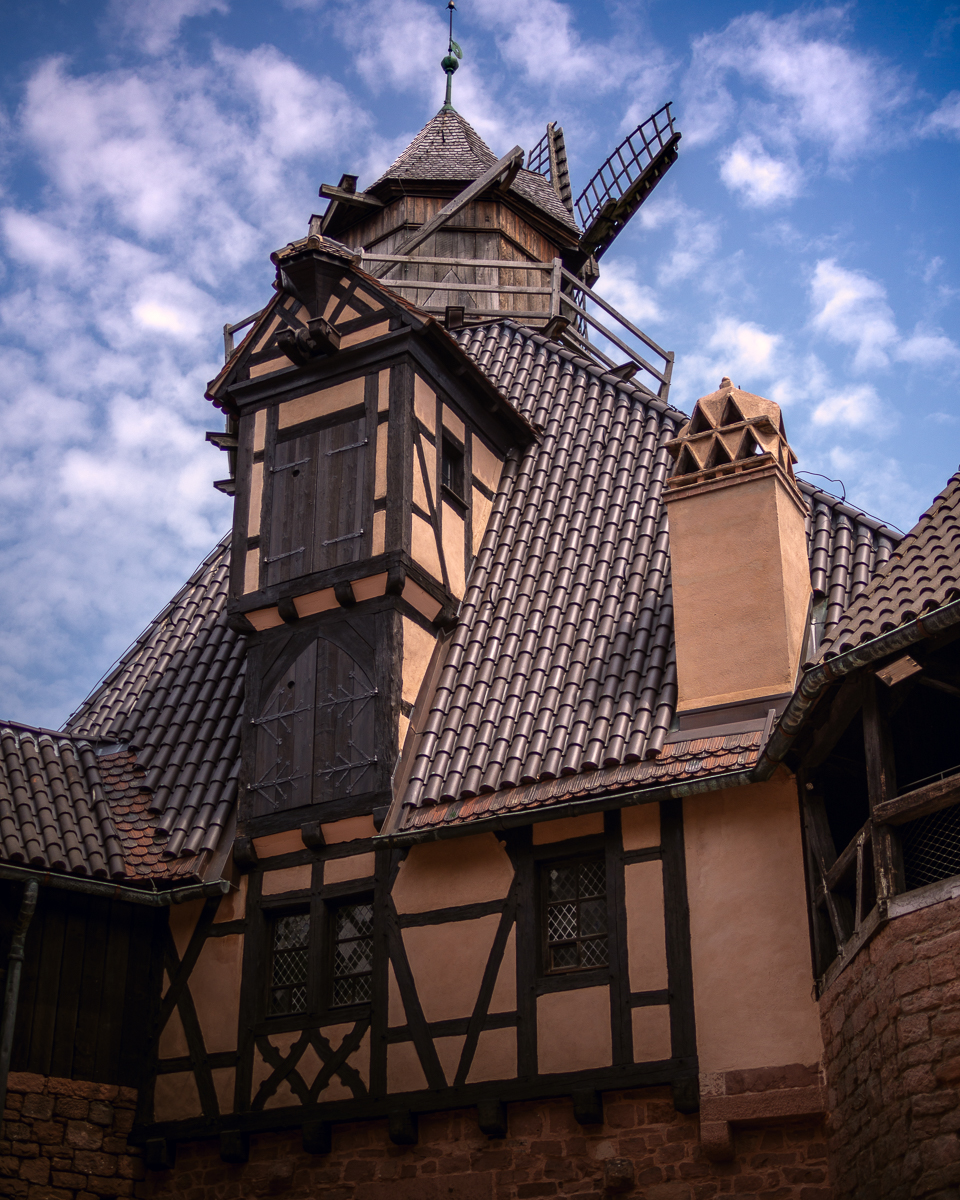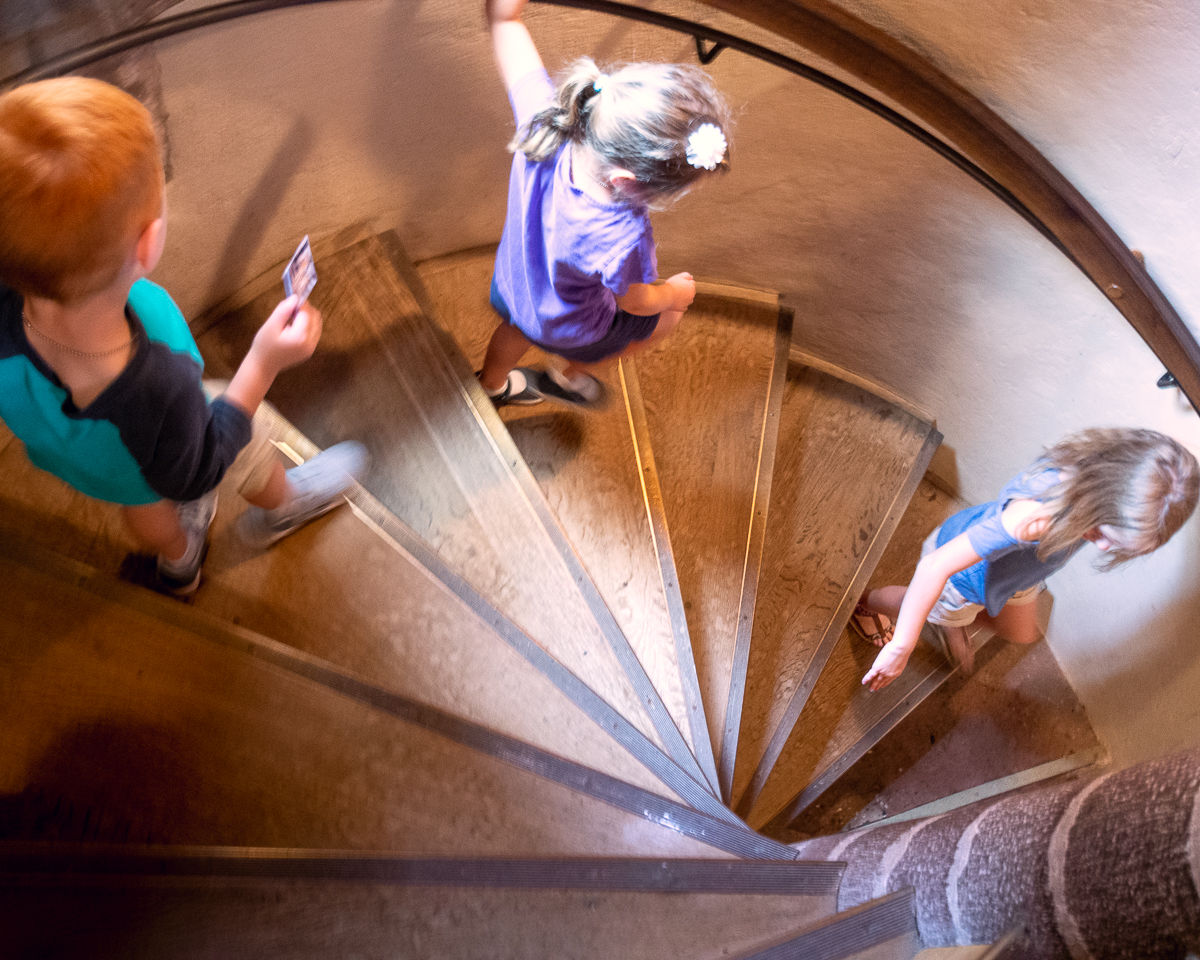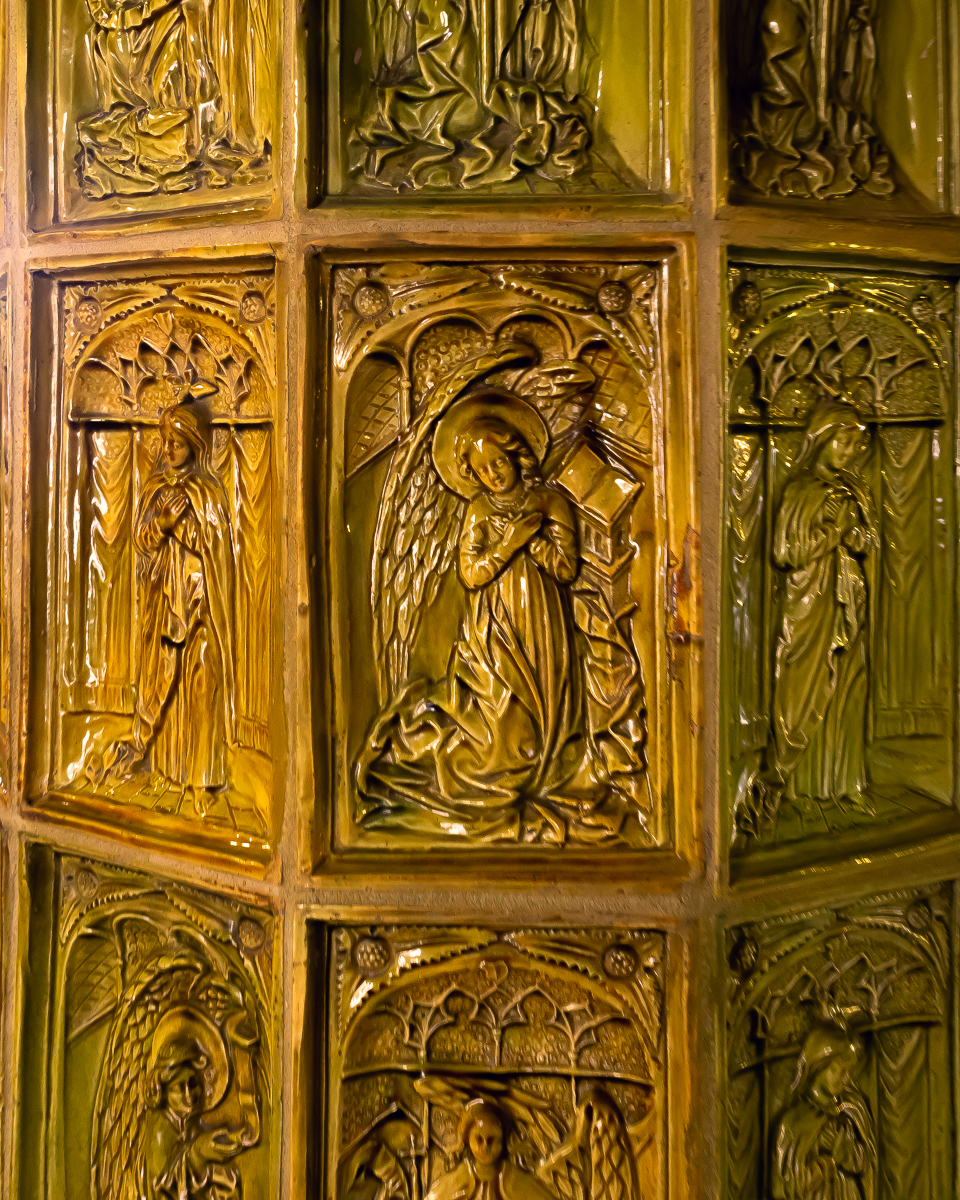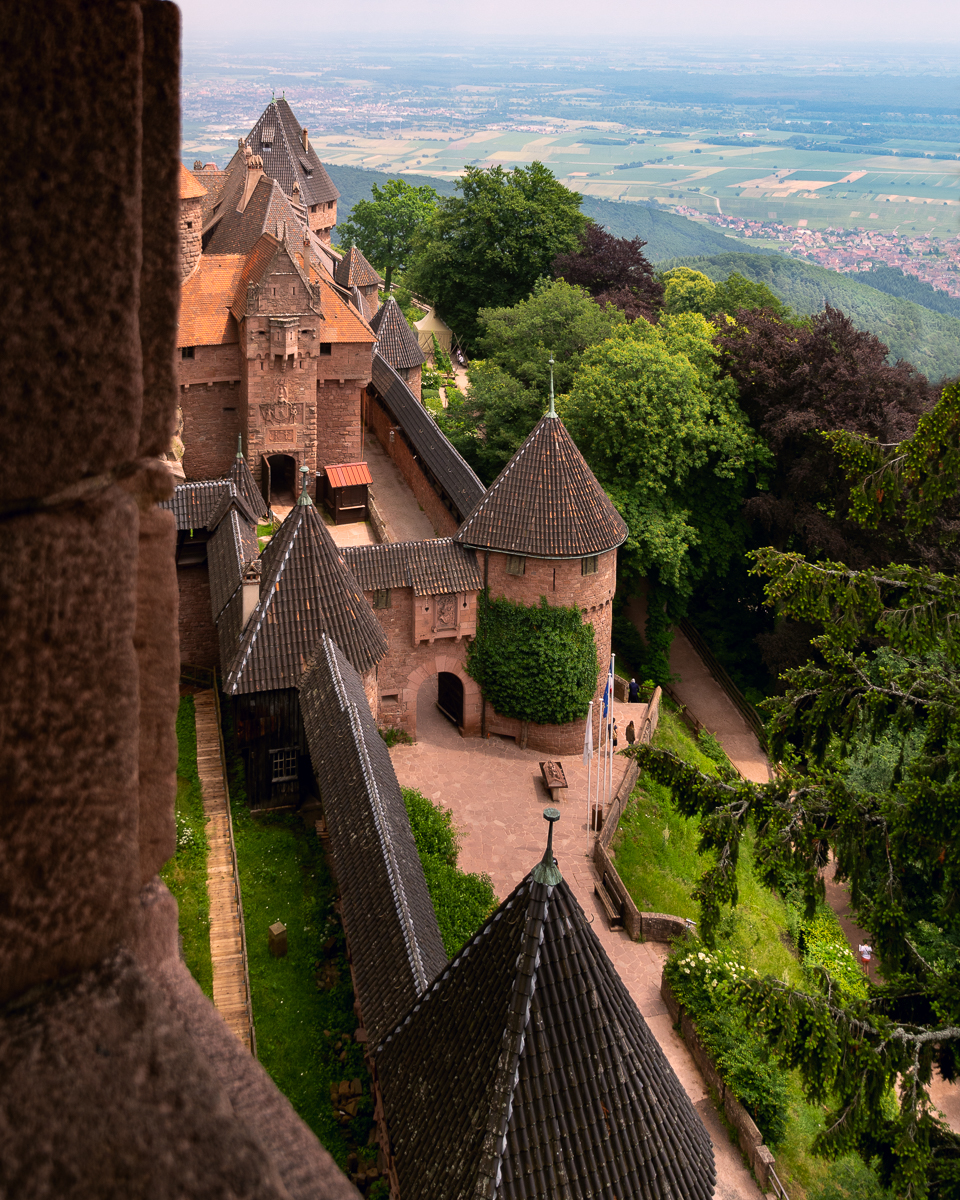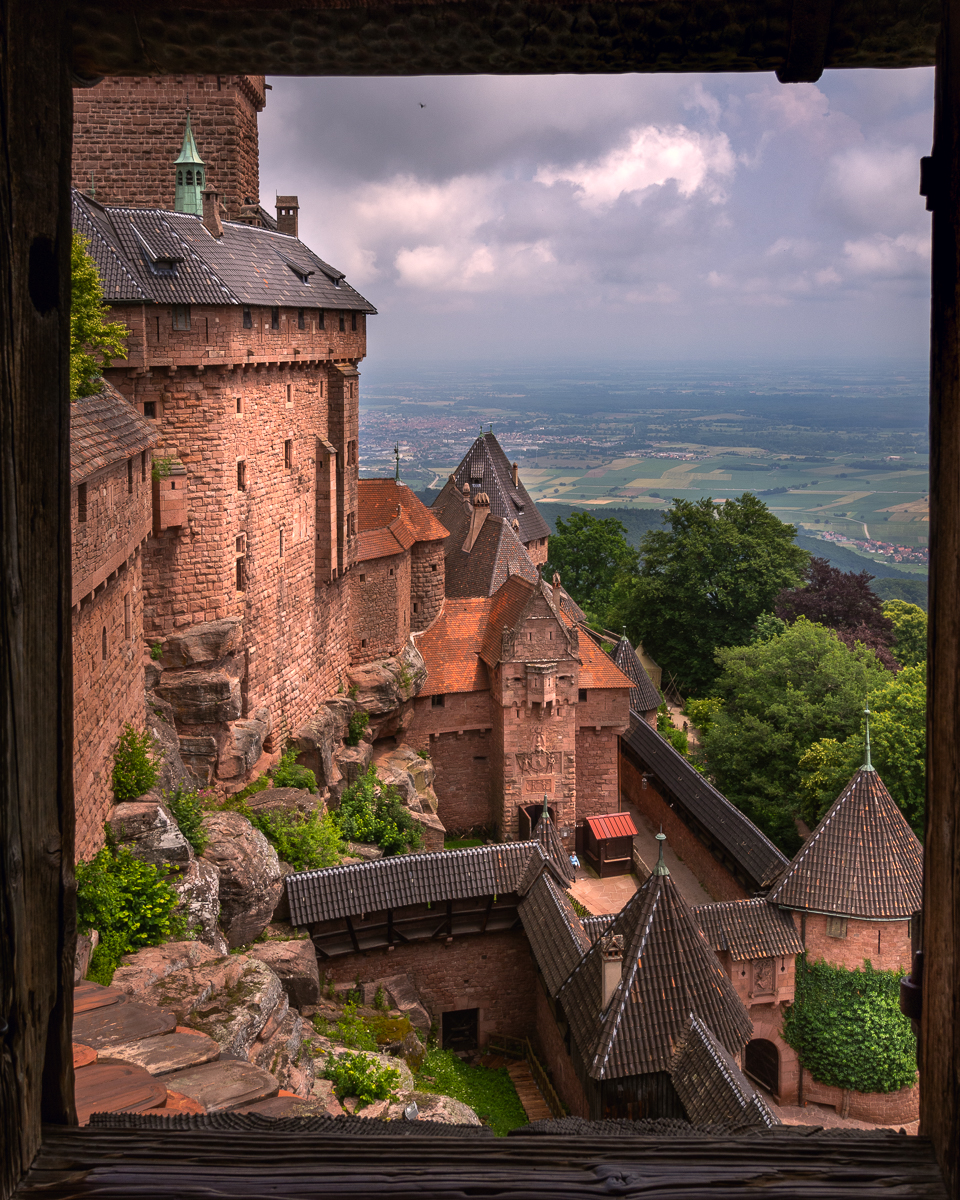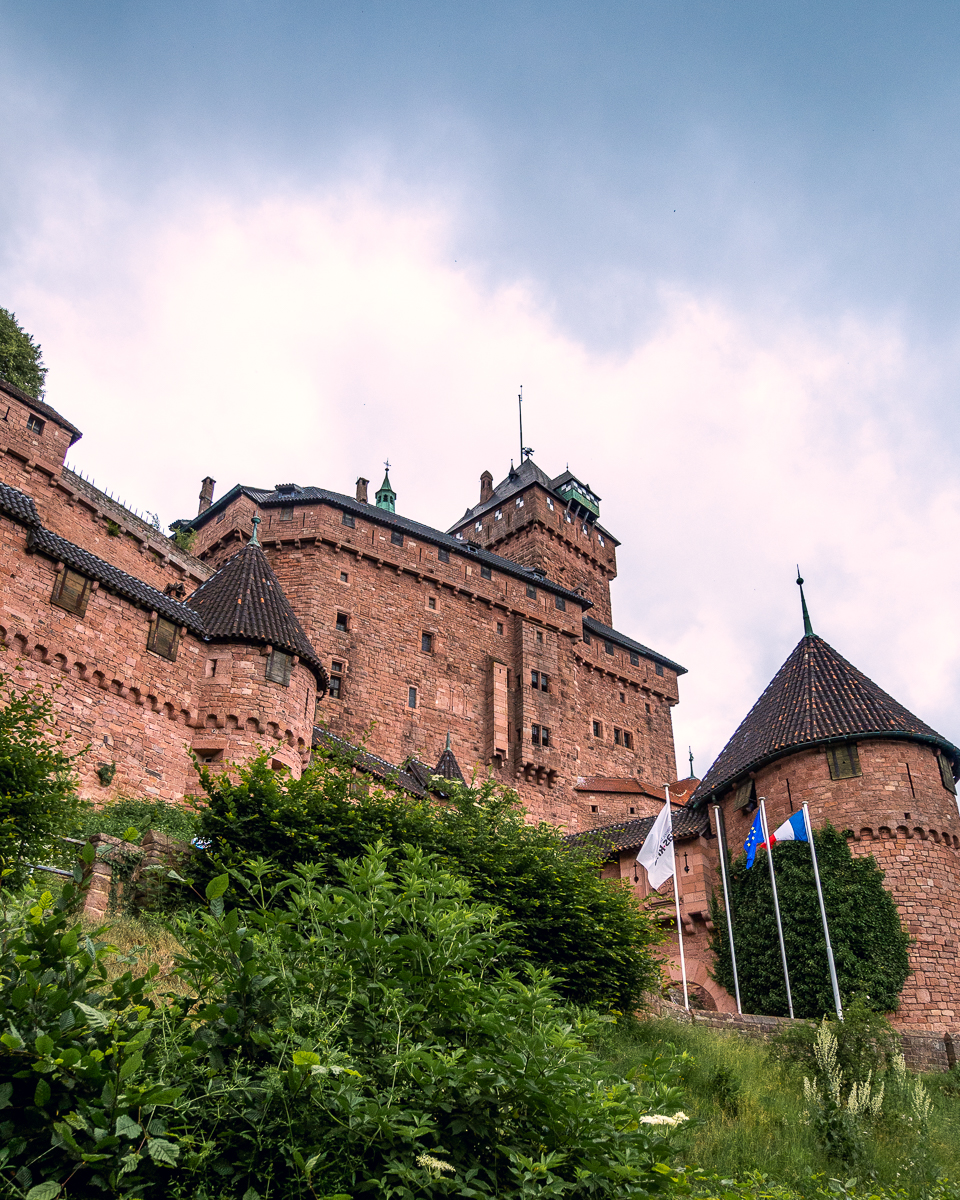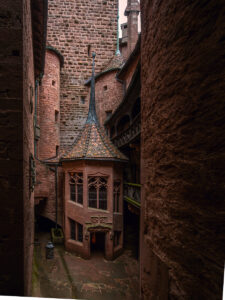 The steep peak that Château du Haut-Kœnigsbourg calls home is hardly a precarious, craggy point. But with a castle so large it still overflows the available space in which to build. Devoid of space for parking the cars pulled over on either side of the final stretch of road and visitors were hiking the remaining portion. The long inclined walk was rewarded with staggering views over the valley from what felt like the lofts of the stratosphere. The castle really did feel as high as it looked from the village which was now a mere map-like demarcation far below us. Spinning around I could now see only the very front external wall of the chateau and a tall tower rising above it in the distance. The steepness of the mountain top and the many tiers of the chateau made seeing it in its entirety almost impossible and the extreme close angles gave it a dizzying distorted appearance. Only at a few special angles could the true size of the monstrous fortress be observed.
The steep peak that Château du Haut-Kœnigsbourg calls home is hardly a precarious, craggy point. But with a castle so large it still overflows the available space in which to build. Devoid of space for parking the cars pulled over on either side of the final stretch of road and visitors were hiking the remaining portion. The long inclined walk was rewarded with staggering views over the valley from what felt like the lofts of the stratosphere. The castle really did feel as high as it looked from the village which was now a mere map-like demarcation far below us. Spinning around I could now see only the very front external wall of the chateau and a tall tower rising above it in the distance. The steepness of the mountain top and the many tiers of the chateau made seeing it in its entirety almost impossible and the extreme close angles gave it a dizzying distorted appearance. Only at a few special angles could the true size of the monstrous fortress be observed.
This was no delicate Loire chateau. This was a fully-grown, man-sized, Knights-of-the-Round-Table-style castle. It was massive. The construction was heavy and dense and the stones that formed the walls were odd-shaped and irregular like the toys of mythical giants tossed on a pile. There seemed to be little rhyme nor reason to its composition outside nor in. It was compartmentalized into a maze of passages, courtyards, staircases and twisted into an endless number of blind curves. It appeared this was all done quite intentionally to foster impenetrability. If those occupying this castle were going to be rooted out a sieger would have to dismantle it stone by stone. Apparently that’s what happened.
Haut-Kœnigsbourg guarded the valley in one form or another from the 12th century until it was finally reduced to rubble by attacking Swedes in the 17th century during the Thirty Years War. In overgrown ruins it became an inspiration to romantics and artists until 1908 when German emperor Wilhelm II rebuilt the castle. Though dubious on the surface the gesture was a kind of olive branch to the Alsatian people who were recently incorporated into the German empire. Haut-Kœnigsbourg’s guardians were devoted to a pure restoration and not a romanticized medieval reproduction to garner attention from tourist dollars. The care and documentation to the project was meticulously researched and lovingly recorded for posterity – and what a marvelous job they did.
Yet again the question of authenticity was brought before me – first in Eguisheim, then in Riquewihr and now at Haut-Kœnigsbourg. What is Haut-Kœnigsbourg? Is it a “real” castle? Is it a copy of a castle? And is restoration or reproduction? All throughout Europe it’s common that structures aren’t actually as old as those who marvel at them think they are. With such a long, sordid past of hostility, explosives-based warfare and highly flammable building materials nearly all fragile structures have been destroyed and rebuilt – some many times over. Many of the dreamy Alsatian villages we’d driven through were bombed by the allies in WWII and faithfully reconstructed. I’m often reminded of Neuschwanstein Castle in Bavaria, which is quite different from Haut-Kœnigsbourg. It’s a 19th century fictional, idealized, fanciful interpretation of a medieval castle – in essence, Disney’s Cinderella castle. It entirely blurs the lines of what is authentic and what is amusement park. Upon first laying eyes on the dramatic structure the beholder is left befuddled as to what actually sits before them. It is, in fact, however, a real castle built by and for a real king – mad King Ludwig II. But it is in no way representative of the architecture nor practical function of its contemporary king’s palaces and intended only for the purposes of whimsy and amusement and absurdity of the delusional king’s fantasy. Is it any more or less real of a castle than Haut-Kœnigsbourg?
As far as the children knew this was a real medieval castle. It certainly looked like one to me. We explored with unbridled curiosity, weaving our way like trying to escape from a funhouse maze. From the outside high menacing walls obscure comprehensive views, and from the inside the lack of windows and open spaces deprive the occupant of any sense of place. Romantic balconies, fit for regal princesses, overlook tiny courtyards. Claustrophobic spiral staircases give secret access to narrow catwalks that criss-cross the convoluted construction. And miniature internal drawbridges protect intriguing sensitive spaces. Room after room of living quarters, tiny chapels and weapon caches filled with swords, pikes and suits of armor hide in the labyrinth. A clear highlight was the richly-frescoed dining hall which seemed poised to serve a carnivore’s dream meal to a king’s court. It’s easy to imagine greasy-game juice and sweet, sticky mead dripping from chins to floors while elaborately-dressed jesters skip and dance to music coming from plucked instruments. It’s a movie-set-ready room, yet modest in size to realistically fit the castle practically.
We climbed from level to level – countless in number – culminating many stories above the foundation in a magnificent wooden tower. Our efforts were rewarded with head-spinning views over the parapets and castle rooftop and the hazy valley – miles upon miles of territory under our domain. It’s easy to get swept up in the excitement of a true castle immersion and the time-travel qualities it induces. I knew I wasn’t a king nor a duke but for a moment I was the occupier of a castle and it was mine.
By the time we climbed down out of the rafters, crossed two drawbridges, descended the wooded mountainside and reached our car it was, yet again, well past our planned time at the chateau. In fact, we had already surpassed the time we planned meeting our Airbnb host in Strasbourg. We munched on our picnic leftovers and after only a short, one-hour drive due north, we were zipping around the attractive streets of the old city.


